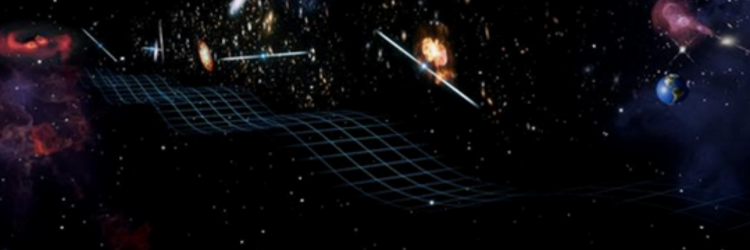Cosmic Clocks Find Gravitational Waves from Colossal Black Holes
There is a spacetime warping effect of gravitational waves passing through our galaxy, says researchers with the U.S. National Science Foundation’s NANOGrav Physics Frontiers Center. Their findings were published in The Astrophysical Journal Letters, and the research is from a collaborative team from more than 50 institutions in the U.S. and abroad. The team discovered variations in the “ticking rate” of pulsars by comparing observations of more than 60 pulsars within radio telescope data spanning 15 years. They found evidence that variations are caused by low-frequency gravitational waves that distort the fabric of physical reality known as spacetime.
The spatial distortion creates the appearance that the pulsars’ radio-signal ticking rates are changing; however, it’s the stretching and squeezing of space between Earth and the pulsars that causes the radio pulses to arrive at Earth billionths of seconds earlier or later than expected.
Gravitational waves were predicted by Albert Einstein in 1916 and confirmed in 2015. The apparent pulsar time shift measured by the NANOGrav team is a few hundred billionths of a second and is a flexing of spacetime between Earth and the pulsars the length of a football field. The distortions were caused by gravitational waves so immense that the distance between two crests is 2-10 light-years, or about 9-90 trillion kilometers. It’s the first evidence of gravitational waves at low frequencies. The likely source of the waves is distant pairs of close-orbiting, ultra-massive black holes.

